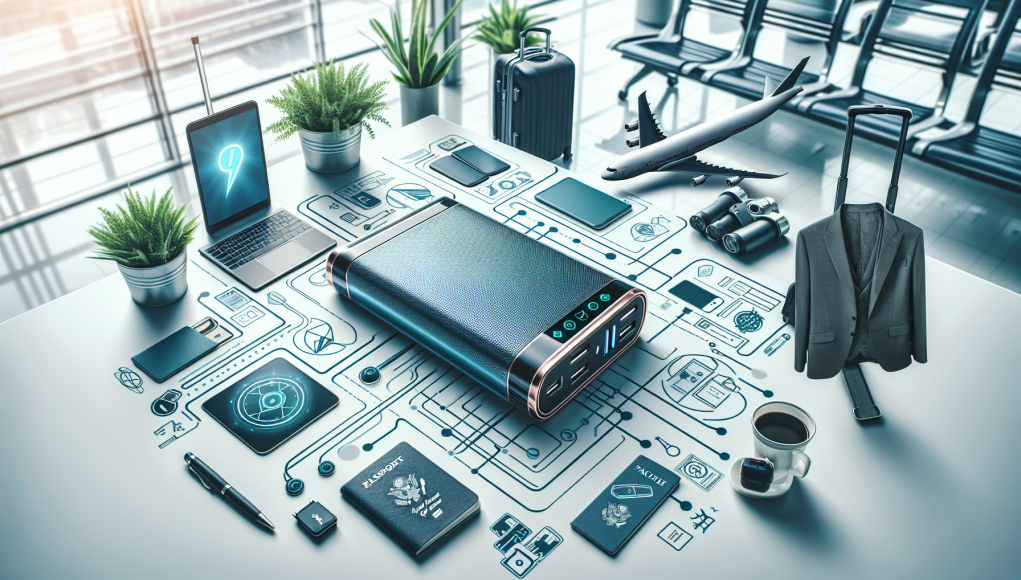The Power Bank That Keeps Work Running: Why Anker Prime Is the One to Pack for Work Travel
There are few panics more modern than an urgent “low battery” chime in the middle of a meeting, briefing or client pitch. For people who hustle between airports, hotels and shared office spaces, power is not a convenience—it is the infrastructure of work itself. In that context, the Anker Prime power bank is more than a gadget: it’s a mission-critical tool that transforms uncertain energy into predictable uptime.
When an ordinary battery won’t do
Work travel is not a series of isolated moments. It’s a concatenation of dependencies: an email that must be sent between connections, a presentation that must be ready when the projector fails, two laptops that must stay on during a long haul of collaborative editing. Most portable chargers solve for phones or a single laptop. A different class of device solves for an ecosystem of devices—the phone, a pair of laptops, a pair of headphones, and perhaps a tablet used on the flight. The Anker Prime positions itself in that class by promising steady, simultaneous power for multiple high-draw devices.
Real-world promise: multiple devices, real workflow
Why does the ability to charge two MacBook Pros and an iPhone matter? Because many modern workflows are multi-device workflows. Someone might be running a video edit on one MacBook Pro while managing email and calendar on another, and keeping a phone ready for two-factor authentication or conference calls. In practice, that means you need capacity, high-wattage delivery and dependable port management so that each device receives the power it needs without overheating or throttling.
On a recent trip, the scenario was familiar: a full day of remote collaboration, two MacBook Pros in use for simultaneous tasks, and an iPhone that needed to be available for client calls and authentications. Plugging everything into the Anker Prime showed what modern power banks can do: both laptops would sip from the same unit, the phone filled back to green within a reassuringly short span, and all devices remained usable. The bank didn’t merely top off batteries—it sustained workflows across a travel day.
What makes this class of power bank suitable for work travel?
- Capacity that supports long days: For work trips that stretch from early meetings to late-night edits, a high-capacity battery reduces anxiety about finding the next outlet.
- High-wattage USB-C Power Delivery: Laptops like MacBook Pros require substantial power. The right power bank provides high-wattage USB-C PD ports that can feed these machines reliably, even under load.
- Multiple ports, intelligent distribution: Being able to plug in two laptops and a phone at once, with intelligent distribution that prioritizes devices as needed, lets teams—or sysadmins of one—maintain continuity.
- Safety and thermal management: Heavy loads create heat. A well-designed power bank manages thermals and includes protections that prevent damage to expensive devices.
- Portability and build quality: Work travel requires a balance between capacity and weight. A device that feels durable and fits into a briefcase or carry-on is far more likely to be used regularly.
Practical considerations for the traveler
There are pragmatic rules that come with carrying substantial battery capacity. For those packing a high-capacity bank:
- Carry it in your hand luggage. Airlines typically require lithium batteries to be in carry-on baggage, not checked luggage.
- Be mindful of airline policies. Many carriers allow batteries up to 100 Wh without approval; batteries between 100 Wh and 160 Wh may require airline approval. Anything above 160 Wh is generally restricted. Check your airline before boarding with high-capacity units.
- Organize cables and adapters. A single multiport bank is most useful when paired with a short USB-C cable and a tidy travel kit—this reduces friction when moving between meeting rooms and terminals.
- Monitor heat during simultaneous charging. It’s normal for devices to feel warm when powering laptops, but avoid enclosing the bank in soft luggage during heavy use.
How it changes the travel experience
Consider the intangible returns. Not needing to hunt for an outlet at a bustling gate, or remaining calm when the hotel room’s wall outlets are contested, translates to better work. Meetings start on time. Presentations don’t stall. The ability to sustain two laptops and a phone lets you create redundancy into your workflow: one machine for editing, one for communication, with the phone as a secure fallback. That redundancy is a resilience strategy—it converts individual device uptime into sustained operational capacity.
Design trade-offs and buyer thinking
No device is perfect for every traveler. High-capacity banks add weight, and there is always a balance to strike between battery size, number of ports and overall portability. Here are a few decision rules for the person packing for a work trip:
- If your trip involves working from multiple locations in a single day, or you regularly carry two laptops, prioritize capacity and multiple high-wattage ports.
- If weight is a decisive factor—short business trips, minimal carry—consider a lighter bank and a second plan for rapid charging when outlets are available.
- Look for clear specifications on simultaneous output. It’s not enough to know the peak per-port wattage; good documentation tells you how the bank behaves when multiple ports are used.
- Durability and warranty matter. Power banks are work tools; treat them like you would any office gear.
Beyond convenience: a philosophy of uninterrupted work
Travel reshapes the boundaries of work. A meeting once confined to an office can now happen in a transit lounge or a hotel lobby. That fluidity requires tools that keep pace. A power bank capable of reliably charging two MacBook Pros and an iPhone is not merely about raw numbers—it’s about enabling a continuity of focus. It allows teams (or individuals carrying the burden of many roles) to allocate cognitive energy where it matters: strategy, communication, creation.
When power becomes predictable, work becomes portable. The device that supplies that power quietly reenvisions what’s possible between meetings, connections and deadlines.
Final impression
For professionals for whom continuity is a competitive advantage, a high-capacity, multiport power bank has graduated from optional to essential. The Anker Prime—by demonstrating consistent multi-device delivery including two MacBook Pros and an iPhone—sits squarely in the category of travel gear that earns its place in a briefcase. It is a tool that reduces friction, preserves momentum and keeps the workday running even when the plugs aren’t nearby.
In a world where time is fragmentary and attention is taxed by logistics, reliable power is a form of stewardship. Packing the right power bank means showing up prepared—not just technically ready, but mentally poised to work wherever the day takes you.
If you travel for work, bring power that changes the terms of your day. The value isn’t only in how many percent points it adds to a battery; it’s in how many tasks it keeps going.





























